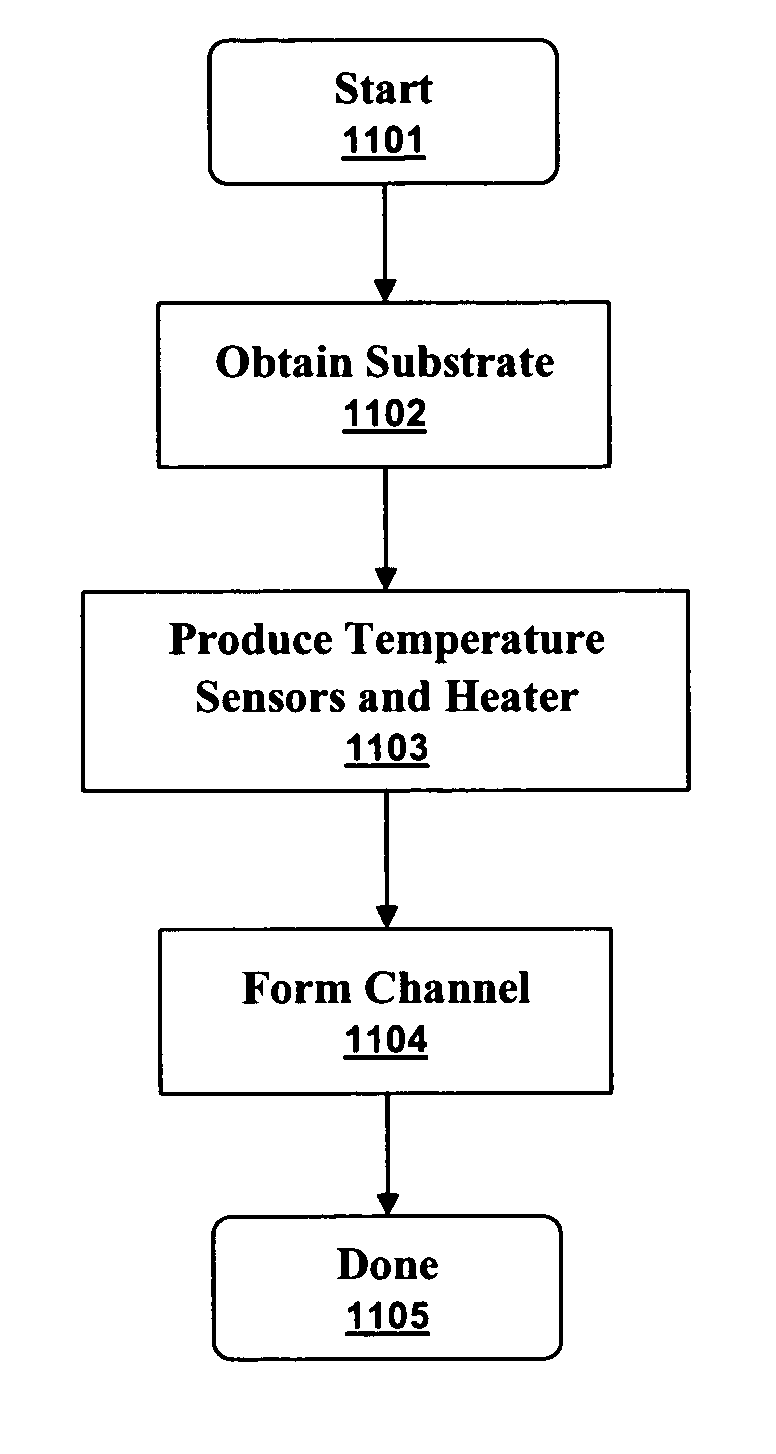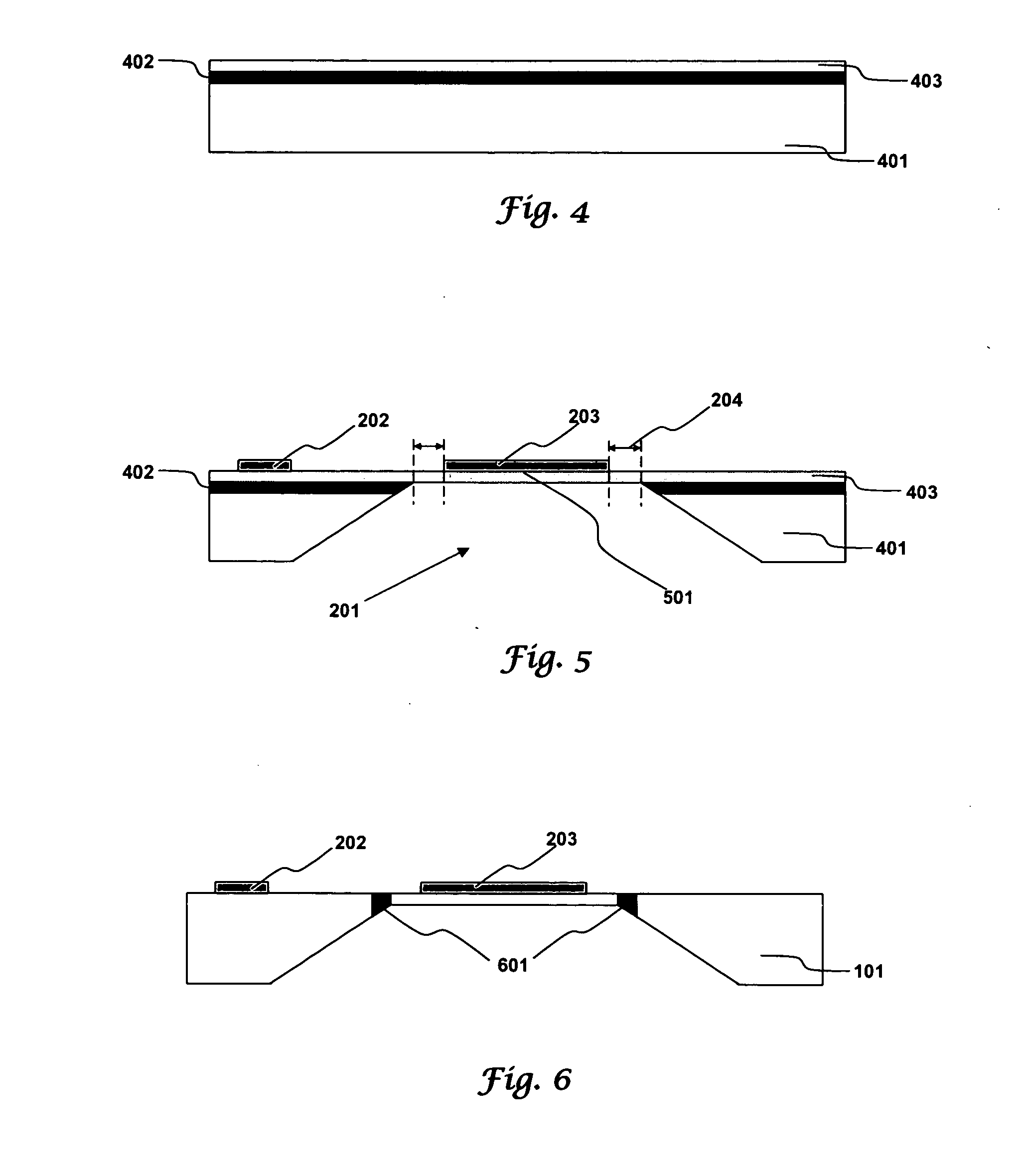Flip-chip flow sensor
a flow sensor and flip-chip technology, applied in the direction of positive temperature coefficient thermistors, liquid/fluent solid measurement, instruments, etc., can solve the problems of wire bonds, flow interaction, corrosion, etc., to reduce the sensitivity of flow sensors, and improve the accuracy. the effect of accuracy
- Summary
- Abstract
- Description
- Claims
- Application Information
AI Technical Summary
Benefits of technology
Problems solved by technology
Method used
Image
Examples
Embodiment Construction
[0022] The particular values and configurations discussed in these non-limiting examples can be varied and are cited merely to illustrate at least one embodiment and are not intended to limit the scope thereof. In general, the figures are not to scale.
[0023]FIG. 1 illustrates a side view of a substrate 101 in accordance with aspects of the embodiments. The substrate can be a wafer of silicon, glass, quartz, or another material as are commonly used in semiconductor manufacturing.
[0024]FIG. 2 illustrates a side view of a flow sensor in accordance with aspects of the embodiments. A channel 201 in the bottom of the substrate 101 is separated from the substrate top by a membrane 205. A substrate temperature sensor 202 is positioned away from the channel 201. Other sensor elements 203 are on top of the membrane 205. An inset distance 204 separates the sensor elements 203 from the edge of the channel 201.
[0025] The membrane must be thick enough to be physically robust and thin enough to...
PUM
 Login to View More
Login to View More Abstract
Description
Claims
Application Information
 Login to View More
Login to View More - R&D
- Intellectual Property
- Life Sciences
- Materials
- Tech Scout
- Unparalleled Data Quality
- Higher Quality Content
- 60% Fewer Hallucinations
Browse by: Latest US Patents, China's latest patents, Technical Efficacy Thesaurus, Application Domain, Technology Topic, Popular Technical Reports.
© 2025 PatSnap. All rights reserved.Legal|Privacy policy|Modern Slavery Act Transparency Statement|Sitemap|About US| Contact US: help@patsnap.com



